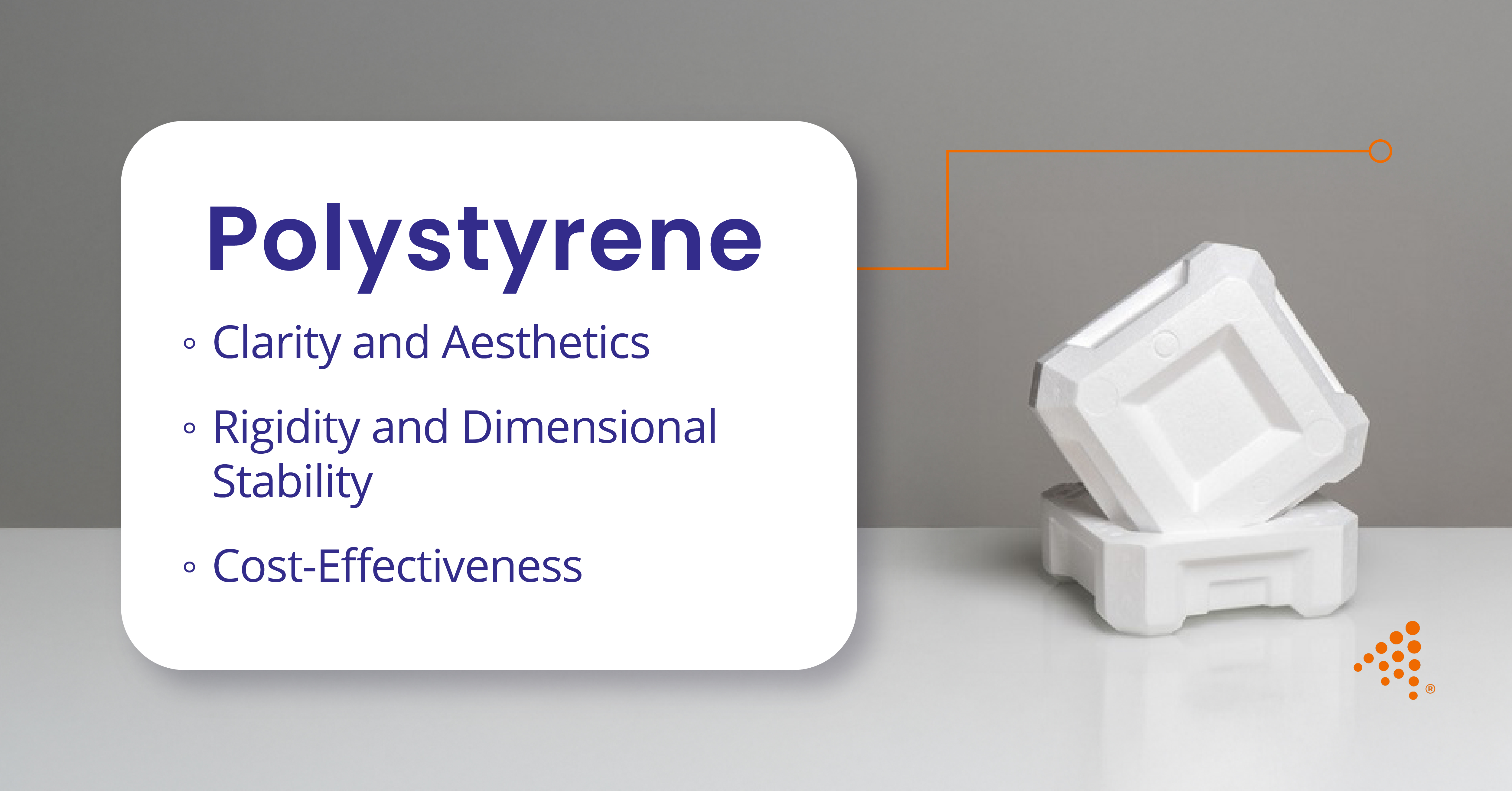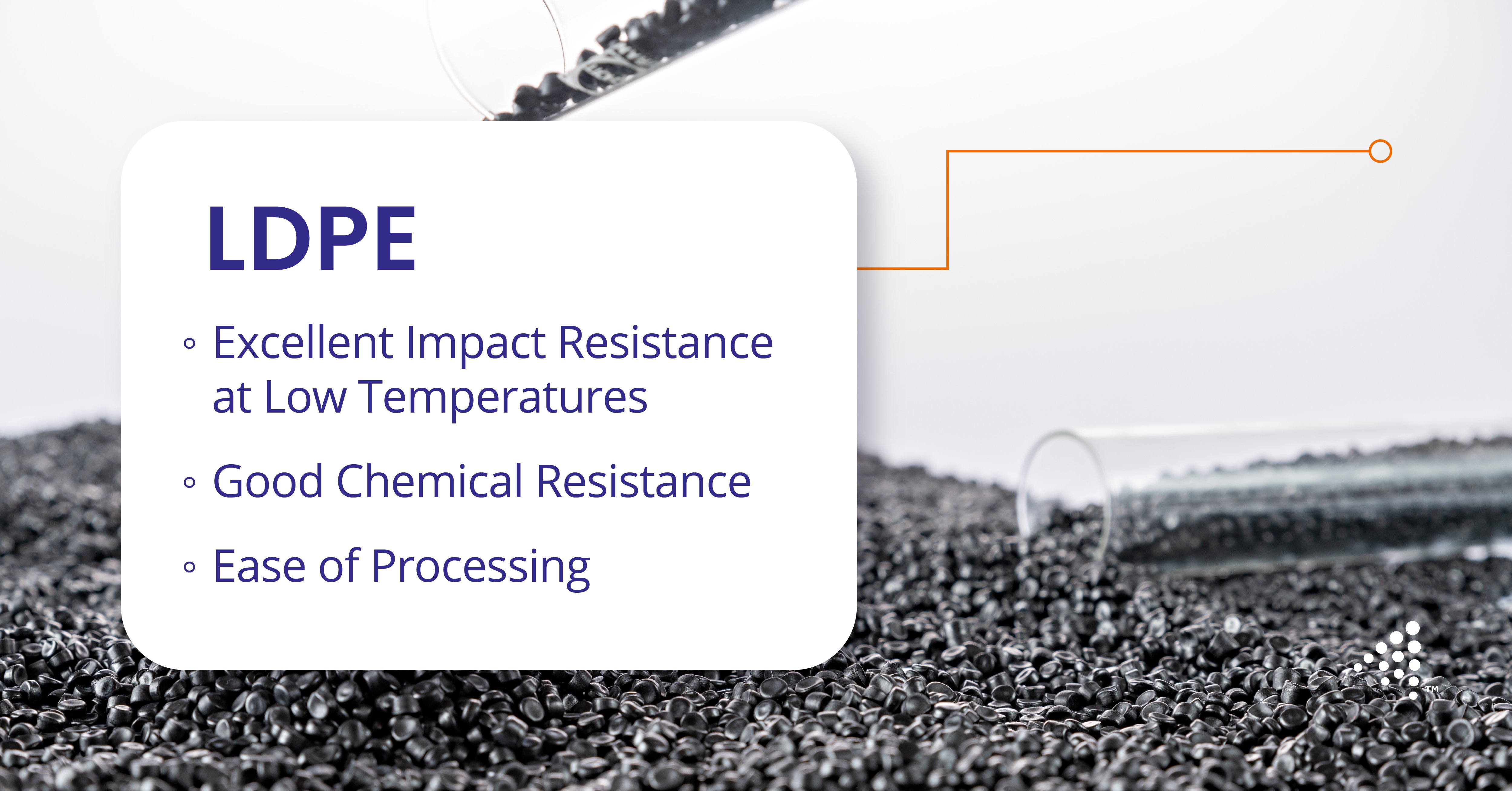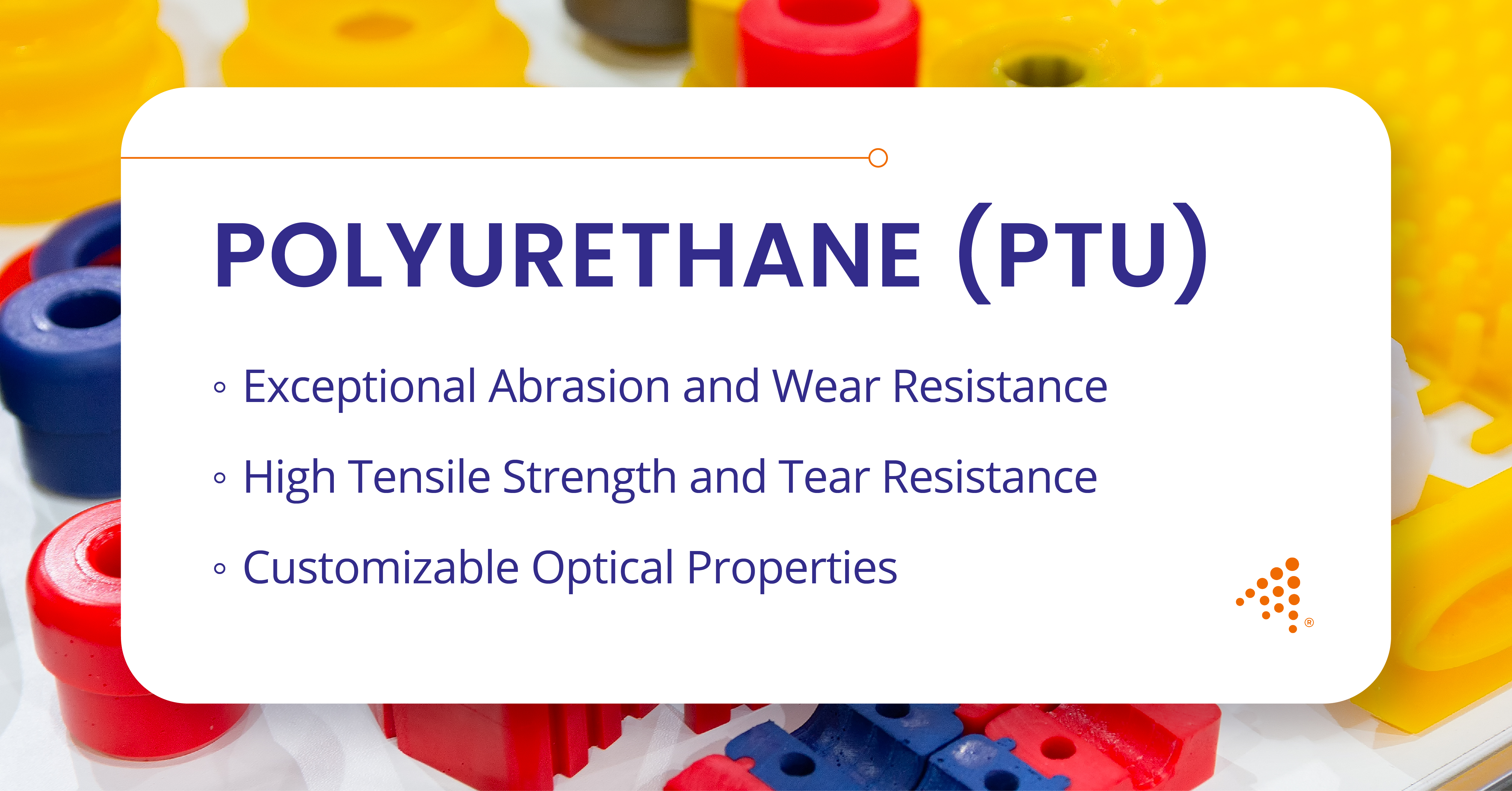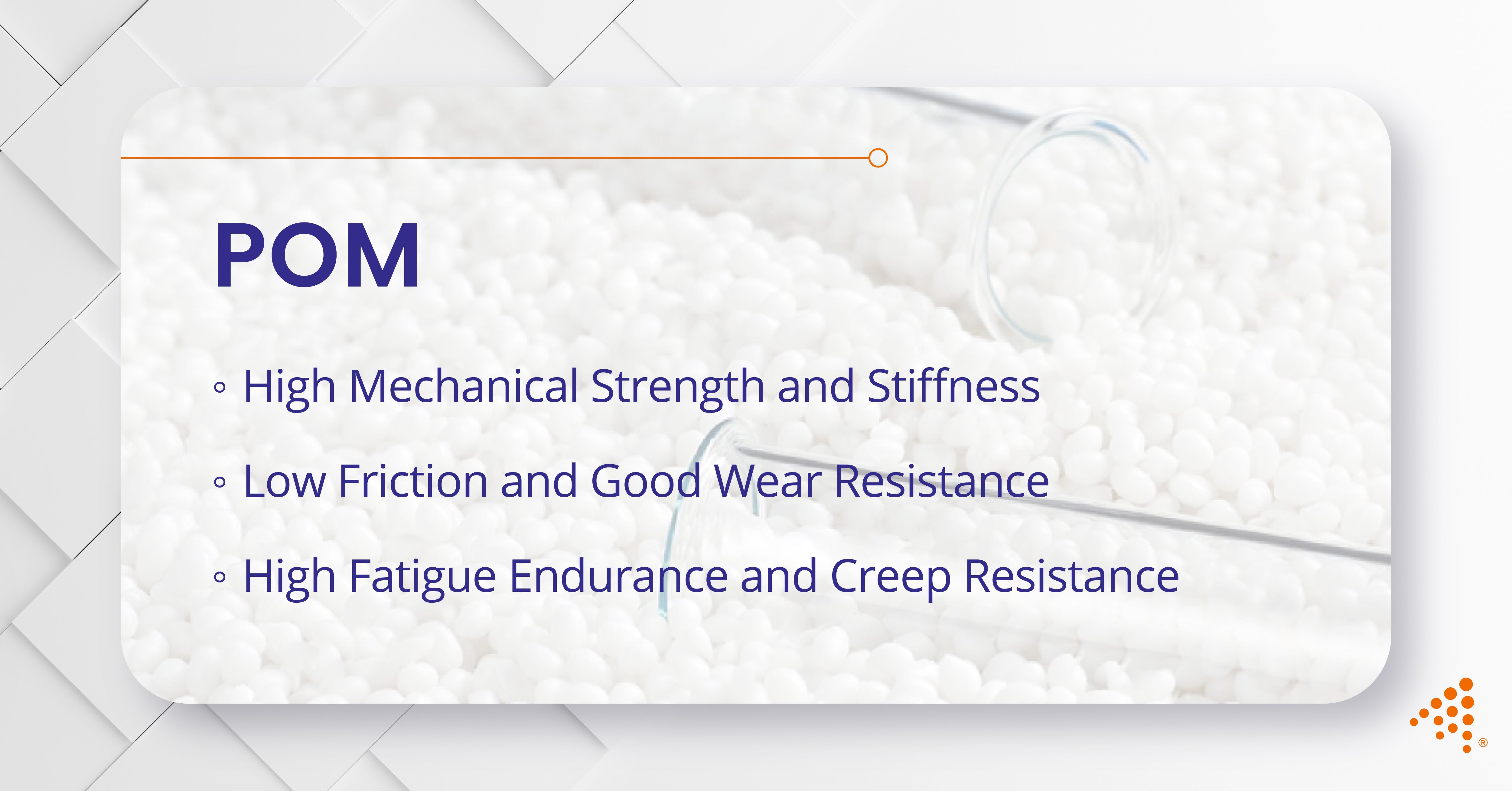Understanding the Versatility and Affordability of LDPE
Low-Density Polyethylene (LDPE) is a flexible, cost-effective thermoplastic resin commonly used in a variety of industries. Known for its pliability,...
7 min read
Nick Erickson : Aug 11, 2025 8:19:00 AM

Polystyrene (PS) is a synthetic aromatic hydrocarbon polymer made from the monomer styrene. It is a versatile and widely used thermoplastic that can be solid or foamed. Known for its clarity, ease of processing, and cost-effectiveness, PS serves a multitude of industries, from food packaging and consumer goods to electronics and, significantly, the medical field. Its adaptability allows it to be transformed into a range of products requiring precision and specific physical properties, making it a staple in many manufacturing settings, including those focused on medical injection molding and plastic injection molding services.
Read More About Injection Molding Defects: Discoloration – Why It Happens and How to Avoid It
PS is available in several forms, primarily General Purpose Polystyrene (GPPS) and High Impact Polystyrene (HIPS). Each form offers a distinct set of characteristics that make it suitable for different uses.
General Purpose Polystyrene is renowned for its exceptional optical clarity, often compared to glass, allowing for high light transmissibility (around 90%). This makes GPPS an ideal candidate for products where visibility is key. It also provides a smooth, glossy surface finish, contributing to the aesthetic appeal of final products.
While GPPS can be brittle, High Impact Polystyrene is modified by compounding it with 5-10% butadiene rubber. This significantly enhances its impact strength and toughness, making HIPS more durable and less prone to fracture than its general-purpose counterpart. This modification does, however, typically result in an opaque material.
Both GPPS and HIPS exhibit good rigidity and dimensional stability. PS maintains its shape well under light to moderate mechanical stress and shows low shrinkage (typically 0.4-0.7%) after processes like injection molding. This low shrinkage allows for the creation of intricate designs and precise part replication, which is crucial for components in medical devices, especially when combined with design for injection molding (DfIM) and plastic part design optimization strategies. Because PS doesn't absorb much water, it won’t swell or change size significantly in humid conditions.
Polystyrene is a lightweight material, which can contribute to lower transportation costs and easier handling of finished products. For instance, the specific gravity of PS is around 1.04 to 1.05 g/cm³, making it one of the lighter plastic resins.
PS is valued for its ease of processing. It flows well in its molten state due to its relatively low viscosity, making it suitable for injection molding parts with fine details and thin walls. It can be readily molded, extruded, or thermoformed into various complex shapes.
PS is an excellent electrical insulator with a low dielectric constant. This property makes it useful for housings and components in electrical and electronic equipment where preventing electrical conductivity is important.
Polystyrene offers good resistance to aqueous solutions, many acids, and bases. However, it has limited resistance to organic solvents, chlorinated solvents, and aromatic hydrocarbons, which can cause it to dissolve or swell.
PS demonstrates good resistance to gamma radiation (up to 10,000 kGy), meaning it can be sterilized using this method without significant degradation of its mechanical properties. This is due to the protective nature of the benzene ring in its molecular structure. Ethylene Oxide (EtO) gas sterilization is also a common method for PS products. However, PS is not generally autoclavable, as it has a relatively low heat deflection temperature (HDT) ranging from approximately 176°F to 205°F (80°C to 96°C), and a softening point that can begin around 158°F to 223°F (70°C to 106°C), with melting temperatures for processing around 410°F to 482°F (210°C to 250°C).
Compared to many other engineering plastics with similar properties, PS is relatively inexpensive. This makes it an economical choice for high-volume disposable items as well as more complex components where material cost is a significant factor, especially when combined with design for manufacturing solutions and custom manufacturing services to maximize cost efficiency.
Our plastic injection mold design services are tailored to bring precision and efficiency to your Polystyrene-based parts.
The unique combination of clarity, rigidity, processability, and cost-effectiveness has led to PS being used in a vast array of products across numerous sectors. Its utility in the medical injection molding industry is particularly noteworthy for specific types of devices and disposables.
In the medical field, GPPS is extensively used for manufacturing disposable, clear items such as Petri dishes, test tubes, diagnostic cassettes, tissue culture trays, and pipettes where visibility of contents is paramount. HIPS is employed for items requiring greater durability, such as diagnostic trays, sample cups, and housings for medical equipment. Its resistance to radiation sterilization makes it suitable for producing pre-sterilized disposable medical supplies, often made through ISO 13485 injection molding and FDA injection molding compliant processes.
PS is a dominant material in the packaging industry. GPPS is used for clear food containers, bakery cases, and transparent packaging that allows consumers to view the product. HIPS is widely utilized for yogurt cups, dairy containers, and protective packaging inserts due to its enhanced impact resistance. Expanded Polystyrene (EPS), or foam, is extensively used for protective cushioning for electronics and fragile goods.
Many everyday consumer items are made from PS. GPPS is found in CD "jewel" cases, disposable cutlery, and clear plastic cups. HIPS is used to make appliance housings, toys, and refrigerator liners because of its toughness.
Due to its electrical insulating properties and dimensional stability, PS is used for casings and components in televisions, computers, and other electronic devices. Conductive grades of HIPS can also be formulated for applications requiring electrostatic discharge (ESD) protection.
The foodservice industry relies heavily on PS for disposable plates, cups, bowls, and cutlery (often GPPS for clarity or HIPS for a bit more durability). Insulated foam containers (EPS) are also common for take-out food and beverages to maintain temperature.
Expanded Polystyrene foam is a well-known insulation material in walls, roofs, and foundations due to its excellent thermal insulation properties and light weight.
Read More About Guide to Polypropylene (PP): A Versatile Material for Manufacturing
While basic PS offers many favorable properties, its performance can be tailored for specific needs through various additives and modifications. These adjustments enhance its utility, particularly for demanding fields like medical device manufacturing.
As previously mentioned, the most significant modification is the addition of polybutadiene rubber to create High Impact Polystyrene (HIPS). This dramatically improves toughness and crack resistance compared to the more brittle General Purpose Polystyrene.
PS readily accepts colorants and pigments, allowing products to be manufactured in a wide spectrum of opaque, translucent, or transparent colors. This is useful for branding, product differentiation, or functional color-coding in medical or laboratory settings.
For applications in electronics or construction where fire safety is a concern, flame retardant additives can be incorporated into PS formulations. These help to slow ignition and reduce the spread of flames, enabling the material to meet specific regulatory standards (e.g., UL94 V-0, V-1, V-2).
Standard PS has poor resistance to UV radiation, which can cause it to yellow and become more brittle over time with prolonged sun exposure. UV stabilizers can be added to improve its performance in applications requiring some degree of outdoor exposure, though it's generally not recommended for long-term outdoor use without significant protection.
Polystyrene's versatility extends to its use as a component in advanced copolymers designed for specialized medical applications. For example, Polystyrene-block-Polyisobutylene-block-Polystyrene (SIBS) is a thermoplastic elastomer that combines the characteristics of polystyrene with other polymers to create materials with exceptional biocompatibility and fatigue resistance, suitable for medical implants. Research highlights the potential of such PS-containing copolymers in demanding healthcare roles, including long-term implantable devices.
Internal and external lubricants can be added to improve the flow characteristics of PS during injection molding or extrusion. This can lead to faster cycle times, better mold release, and improved surface finish on the final parts.
For packaging sensitive electronic components or in environments where static discharge is a concern, antistatic agents can be incorporated to reduce surface resistivity and prevent the buildup of static electricity. Conductive fillers like carbon black can be used to create HIPS conductive compounds.
To create foamed polystyrene (EPS), blowing agents are used. During processing, these agents expand, creating the lightweight, cellular structure that gives EPS its characteristic insulating and cushioning properties.
Read More About Guide to Optimal Material Choices for Injection Molding
Despite its versatility and widespread use, PS has several limitations that designers and engineers must consider.
General Purpose Polystyrene is inherently brittle and prone to cracking or shattering upon impact. While HIPS addresses this, it comes at the cost of transparency and sometimes other properties.
PS is susceptible to attack by many organic solvents, including ketones, esters, and aromatic and chlorinated hydrocarbons. Contact with these substances can cause it to swell, dissolve, or crack, limiting its use in environments where such chemicals are present.
Polystyrene has a relatively low softening point and heat deflection temperature. Its typical maximum continuous use temperature is generally below 212°F (100°C). This makes it unsuitable for applications involving exposure to higher temperatures, such as autoclaving (steam sterilization), or for parts that will experience significant thermal loads.
Without UV stabilizers, PS degrades when exposed to sunlight or other sources of ultraviolet radiation. This can lead to yellowing, loss of strength, and increased brittleness, making it unsuitable for most long-term outdoor uses.
Standard PS is flammable and burns with a sooty flame. While flame retardant grades are available, the inherent flammability needs to be considered for product safety in certain contexts.
Explore our full range of DfM services and discover how our design and manufacturing company can optimize your next product.
Polystyrene, in its various forms, presents a compelling material choice for a wide range of products, particularly where clarity, rigidity, ease of processing, and cost are key decision drivers. For industries like medical device manufacturing, GPPS offers an economical solution for high-volume disposable items like Petri dishes and test tubes, where optical clarity for inspection and sterility (achievable through radiation or EtO) are essential. HIPS provides a step up in durability for components that may experience more handling or minor impacts, such as equipment housings or trays, while still being cost-effective for injection molding.
The material's excellent dimensional stability and low shrinkage ensure that complex parts with tight tolerances can be consistently produced, a critical factor in the medical and electronics sectors. Its good electrical insulation properties are beneficial for housings and components that protect sensitive electronics. Furthermore, the ease with which PS can be modified with additives like colorants or flame retardants allows for customization to meet specific functional or aesthetic requirements. While its environmental profile and chemical resistance require careful consideration, for a significant number of indoor, disposable, or cost-sensitive items not exposed to harsh chemicals or high temperatures, Polystyrene remains a highly practical and widely utilized thermoplastic.
Read More About Injection Molding Voids: Causes & Solutions
At Aprios, we offer expert design for injection molding (DfIM), plastic injection molding services, and custom manufacturing services to ensure your project meets the highest standards with optimal material selection and processing strategies.
Contact Aprios today for tailored solutions in medical injection molding and discover how our end to end manufacturing services can bring your polystyrene-based products to life with precision and quality.
Explore our Material Selection tool or request a consultation to find the perfect PS grade and manufacturing approach for your unique application.

Low-Density Polyethylene (LDPE) is a flexible, cost-effective thermoplastic resin commonly used in a variety of industries. Known for its pliability,...

Polyurethane (PTU) is a uniquely versatile class of polymers that exists in a variety of forms, from flexible and rigid foams to durable elastomers...

Polyoxymethylene (POM), commonly known as acetal or polyacetal, is a high-performance engineering thermoplastic celebrated for its impressive...